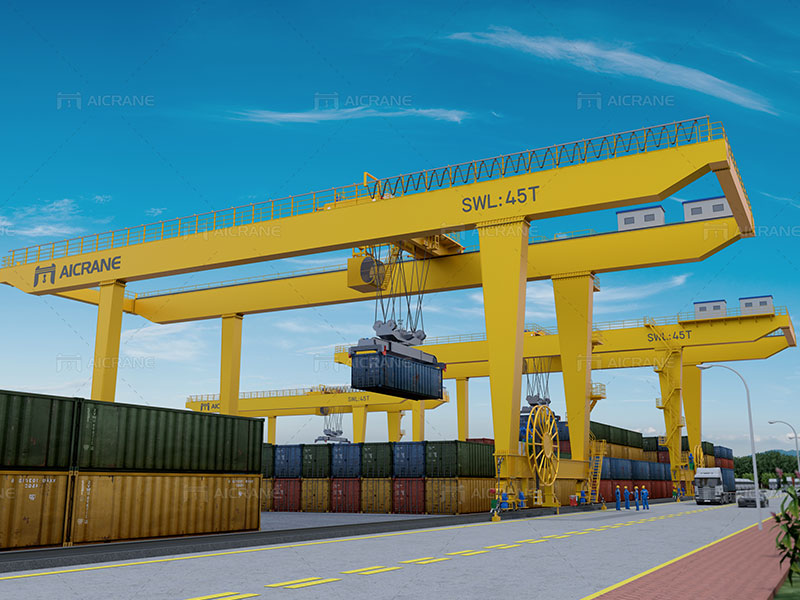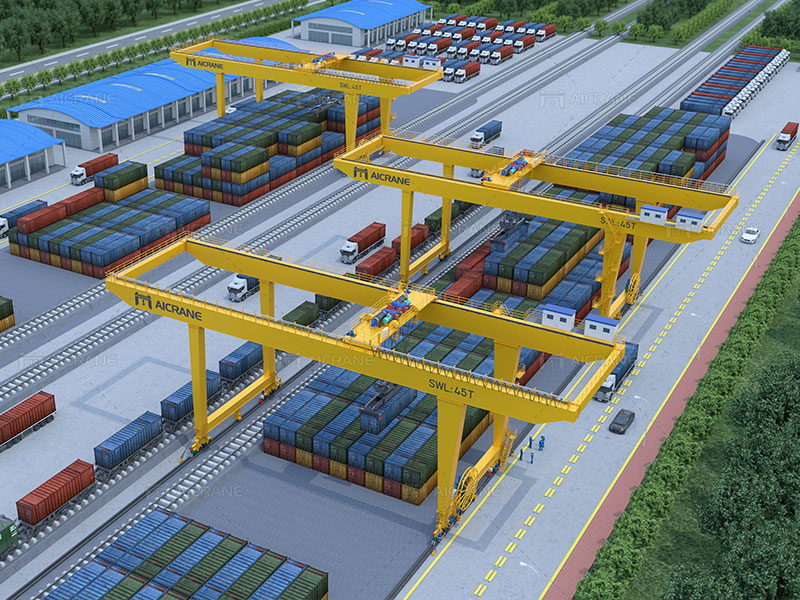Container handling is a critical aspect of global logistics, where efficiency, speed, and accuracy are key to success. As the demand for faster and more reliable shipping continues to grow, the use of smart technologies in container gantry cranes is transforming the future of container handling. Container gantry cranes, traditionally used for loading and unloading containers from ships to the shore, are now being equipped with advanced smart technologies that enhance productivity, safety, and overall operational efficiency. This article explores the smart technologies being integrated into container gantry cranes and how they are shaping the future of container handling.

1. Automation and Remote Control
One of the most significant advancements in container gantry cranes is the introduction of automation and remote control systems. Automated container gantry cranes can operate without direct human intervention, reducing labor costs and minimizing human error. These cranes are equipped with advanced sensors, cameras, and control systems that enable precise container positioning and movement.
Remote control systems allow operators to manage cranes from a distance, often from a control room, where they have a better view and access to real-time data. This reduces the need for operators to work in hazardous environments, improving overall safety. With remote control and automation, container handling becomes faster, more accurate, and less prone to accidents.
2. Internet of Things (IoT) Integration
The Internet of Things (IoT) plays a crucial role in the development of smart gantry cranes. By integrating IoT technology, cranes can collect and transmit data on various operational parameters, such as load weight, crane position, fuel consumption, and maintenance needs. This real-time data allows for better monitoring and predictive maintenance, reducing downtime and optimizing operations.
IoT-enabled cranes can communicate with other port equipment and systems, such as terminal operating systems (TOS) and yard management systems, to ensure seamless operations. The data collected by IoT sensors can be analyzed to identify patterns and trends, which helps in optimizing crane movements, reducing energy consumption, and improving overall efficiency.

3. Artificial Intelligence (AI) and Machine Learning
Artificial intelligence (AI) and machine learning are at the forefront of smart technologies for container gantry cranes. AI algorithms can analyze vast amounts of data generated by IoT sensors and make decisions in real-time. For example, AI can predict the best path for crane movement, suggest optimal container stacking, and detect potential collisions or safety hazards.
Machine learning models can learn from historical data and continuously improve RMG crane performance. These models can adapt to changing conditions, such as weather, container types, and terminal congestion, making crane operations more flexible and efficient. AI-driven systems also help in optimizing energy usage, reducing carbon emissions, and contributing to sustainable port operations.
4. Advanced Vision and Sensing Systems
Modern container gantry cranes are equipped with advanced vision and sensing systems, such as LiDAR, 3D cameras, and radar. These systems provide a high level of situational awareness, allowing cranes to detect objects, obstacles, and other equipment in their vicinity. Advanced vision systems enable precise container handling, especially in low-visibility conditions like fog, rain, or nighttime operations.
Collision avoidance is a critical safety feature enabled by these advanced sensing systems. Cranes can automatically stop or adjust their movements if an obstacle is detected, preventing accidents and damage to equipment and cargo. Furthermore, vision systems can be used for container identification and verification, streamlining the loading and unloading process.
5. Digital Twins and Simulation
The concept of digital twins is gaining traction in the realm of smart container gantry cranes. A digital twin is a virtual replica of a physical crane that allows operators and engineers to simulate and analyze crane operations in real-time. By using digital twins, ports can optimize crane movements, predict equipment failures, and plan maintenance schedules more effectively.
Digital twins also enable virtual training for crane operators, allowing them to practice in a simulated environment without risking real-world accidents. This helps in reducing the learning curve and ensuring that operators are well-prepared to handle various scenarios. Moreover, digital twins can be used to test new software updates and system configurations before implementing them on actual cranes, reducing the risk of operational disruptions.
6. Enhanced Safety and Security Features
Safety is paramount in container handling operations, and smart technologies in container gantry cranes are significantly enhancing safety standards. Advanced safety features, such as anti-sway systems, load moment indicators, and emergency stop functions, are now commonly integrated into modern cranes. These systems ensure that containers are handled smoothly, reducing the risk of accidents caused by sudden movements or swings.
Moreover, smart cranes are equipped with cybersecurity measures to protect against potential cyber threats. With the increasing digitization of port operations, cybersecurity has become a critical concern. Smart cranes employ encryption, firewalls, and secure communication protocols to prevent unauthorized access and ensure the integrity of data and control systems. To learn more about these heavy lifting equipment, visit website: https://aicraneliftingsolution.com/
7. Energy Efficiency and Sustainability
Smart technologies are also driving the shift towards more energy-efficient and sustainable container gantry cranes. Electric and hybrid cranes are becoming more popular, reducing reliance on diesel engines and lowering greenhouse gas emissions. Smart energy management systems optimize power usage by adjusting crane movements and speeds based on real-time demand.
Regenerative braking systems are another innovation that captures and stores energy generated during braking, which can be reused for other crane operations. This not only reduces energy consumption but also extends the lifespan of crane components. Ports that prioritize sustainability are increasingly investing in smart cranes to achieve their environmental goals and reduce their carbon footprint.
8. Future Trends and Developments
The future of container gantry cranes is set to be shaped by ongoing advancements in technology. Future trends include the development of fully autonomous cranes, where AI and machine learning systems take full control of crane operations without human intervention. Quantum computing could further enhance the decision-making capabilities of AI-driven cranes, optimizing operations on an unprecedented scale.
Additionally, the integration of 5G technology will enable faster and more reliable communication between cranes and port management systems, further enhancing operational efficiency. The use of augmented reality (AR) and virtual reality (VR) for remote monitoring, maintenance, and training is also expected to grow, providing new ways to interact with and manage crane operations.
Conclusion
Smart technologies in container gantry cranes are revolutionizing the container handling industry by enhancing efficiency, safety, and sustainability. Automation, IoT, AI, advanced sensing systems, digital twins, and energy-efficient solutions are all contributing to the development of smarter, more capable cranes. As ports and terminals continue to embrace these innovations, the future of container handling will be defined by increased productivity, reduced costs, and a stronger commitment to environmental sustainability. The integration of smart technologies in container gantry cranes is not just a trend but a necessity for ports looking to remain competitive in an increasingly digital world.